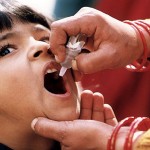 Polio, otherwise known as poliomyelitis, is a disease that the world, as a whole, is eager to be rid of. Once it has been permanently destroyed, the medical community will face new challenges.
Polio, otherwise known as poliomyelitis, is a disease that the world, as a whole, is eager to be rid of. Once it has been permanently destroyed, the medical community will face new challenges.
The polio virus has the potential to cripple and even kill its victims, spreading from person to person through infected feces in food or water.
Polio is caused by the poliovirus, and around 0.5% of those infected will be paralyzed. This paralysis can occur within days or even hours of infection.
The paralysis can eventually result in death as the muscles responsible for breathing seize up.
Because only 3 out of every 10 infected people show any symptoms, the polio virus spreads through populations with ease.
Mainly affecting children, polio has the potential to paralyze victims for life; this ability made it one of the most feared diseases worldwide.
However, through huge, internationally coordinated vaccination programs, polio is finally being shown the door.
The war on polio
Since 1988, when the Global Polio Eradication Initiative was formed, polio has been reduced by 99% across the world. It is now just the poorest and most marginalized communities where polio still rears its ugly head.
Effective vaccines, costing as little as $0.14 per person, have been spread far and wide by charities and governments across the world. The virus itself cannot survive without a host; if it cannot find an un-immunized human, it will die out.
Only Afghanistan and Pakistan are yet to halt the transmission of polio. According to the World Health Organization (WHO), the battle against polio is “the largest-ever internationally coordinated public health effort in history.”
There are three wild types of polio. The last case of type 2 occurred in 1999, and the last case of type 3 was recorded in 2012. Only type 1 remains at large.
Within just a few years, polio should be totally eradicated, but this eradication will bring with it new challenges.
Post-eradication considerations
As we near the total eradication of polio, concerns over stockpiling vaccine containing live viruses come to the fore.
A new study, published in PLOS Pathogens, investigates safer vaccine strains that would pose less of a threat if they were to be accidentally released.
Currently, there are two types of vaccine:
- Live attenuated virus: attenuated viruses are weakened and carry genetic mutations preventing them from infecting. However, in rare cases, these viruses can revert to their virulent mode. They have also been found to lay dormant in immunocompromised individuals and pass into their feces, presenting the possibility of further infections
- Inactivated virus: although inactivated viruses are themselves safe, their method of production carries inherent risks. To manufacture these vaccines, large quantities of live viruses must be grown before eventually being killed.
Sabin and alternative attenuated strains
The current study, conducted by Philip Minor at the National Institute for Biological Standards and Control in Potters Bar, UK, investigates alternative attenuated strains and their potential for safer vaccines in the future.
Once eradication of polio is complete, the WHO have recommended that manufacturers of vaccines switch to using an attenuated strain known as the Sabin strain.
The Sabin strain is a well-known and well-understood attenuated vaccine strain. For this reason, Minor and his colleagues used it as their starting point. They altered Sabin’s RNA in an effort to produce more stable, hyperattenuated strains.
Four parameters were used to rate the success of these newly created strains:
- Genetic stability: would the virus easily revert to its virulent form?
- Growth: would the new strain grow in a tissue culture? (This ability is essential if it is to be produced on a large scale)
- Paralysis potential: could the new strain cause paralysis in the mouse model of polio?
- Immunization: after inactivation, could they effectively immunize mice?
The study found that the new strains they designed were indeed more stable, had the potential for mass production and were safer than the original Sabin strain.
The researchers say: “We have developed new strains for inactivated polio vaccine production with negligible risk to the human population should they escape. [This will] allow for safe vaccine production in the post-eradication world.”
Once polio is finally eradicated, it will be only the third disease to have faced such a fate, after smallpox (eradicated in 1979) and rinderpest (a disease of cattle, eradicated in 2001).
Our next task will be to ensure that polio is never allowed to return. Medical News Today recently covered the case of a man who shed deadly polio virus in his feces for 28 years.
Source: MNT – Medical News Today

















